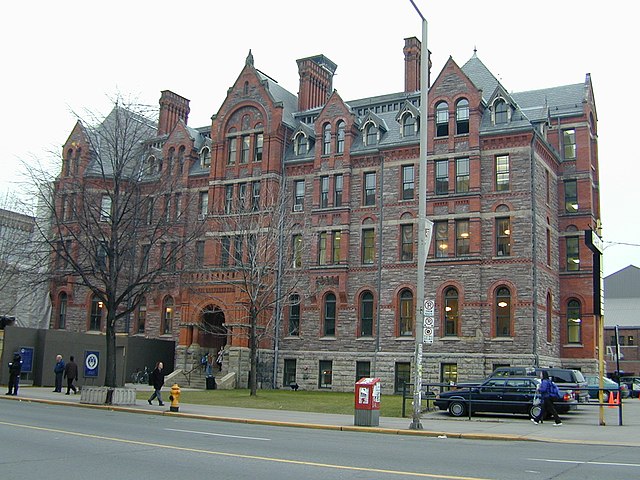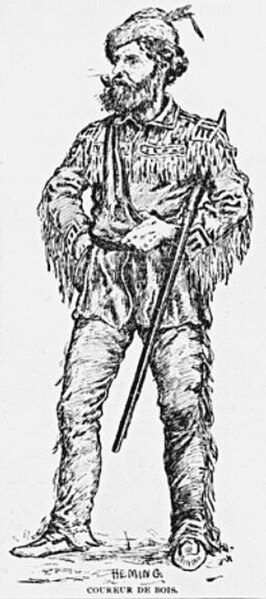Harold Adams Innis was a Canadian professor of political economy at the University of Toronto and the author of seminal works on media, communication theory, and Canadian economic history. He helped develop the staples thesis, which holds that Canada's culture, political history, and economy have been decisively influenced by the exploitation and export of a series of "staples" such as fur, fish, lumber, wheat, mined metals, and coal. The staple thesis dominated economic history in Canada from the 1930s to 1960s, and continues to be a fundamental part of the Canadian political economic tradition.
Innis in the 1920s
The original home of McMaster University at 273 Bloor Street West, Toronto
Harold Innis in uniform
Donald Alexander Smith drives the last spike of the Canadian Pacific Railway at Craigellachie, BC—November 7, 1885
Economic history of Canada
Canadian historians until the 1960s tended to focus on the history of Canada's economy because of the far fewer political, economic, religious and military conflicts present in Canadian history than in other societies. Many of the most prominent English Canadian historians from this period were economic historians, such as Harold Innis, Donald Creighton and Arthur R. M. Lower.
"Coureur de bois" – A woodcut by Arthur Heming
Butting square timber, Quebec City, QC, 1872.
Timber booms on the Ottawa River, Canada, 1872.
The Rideau Canal in Ottawa, Ontario, Canada, with Parliament Hill and the old "Union Station" visible in the background.








